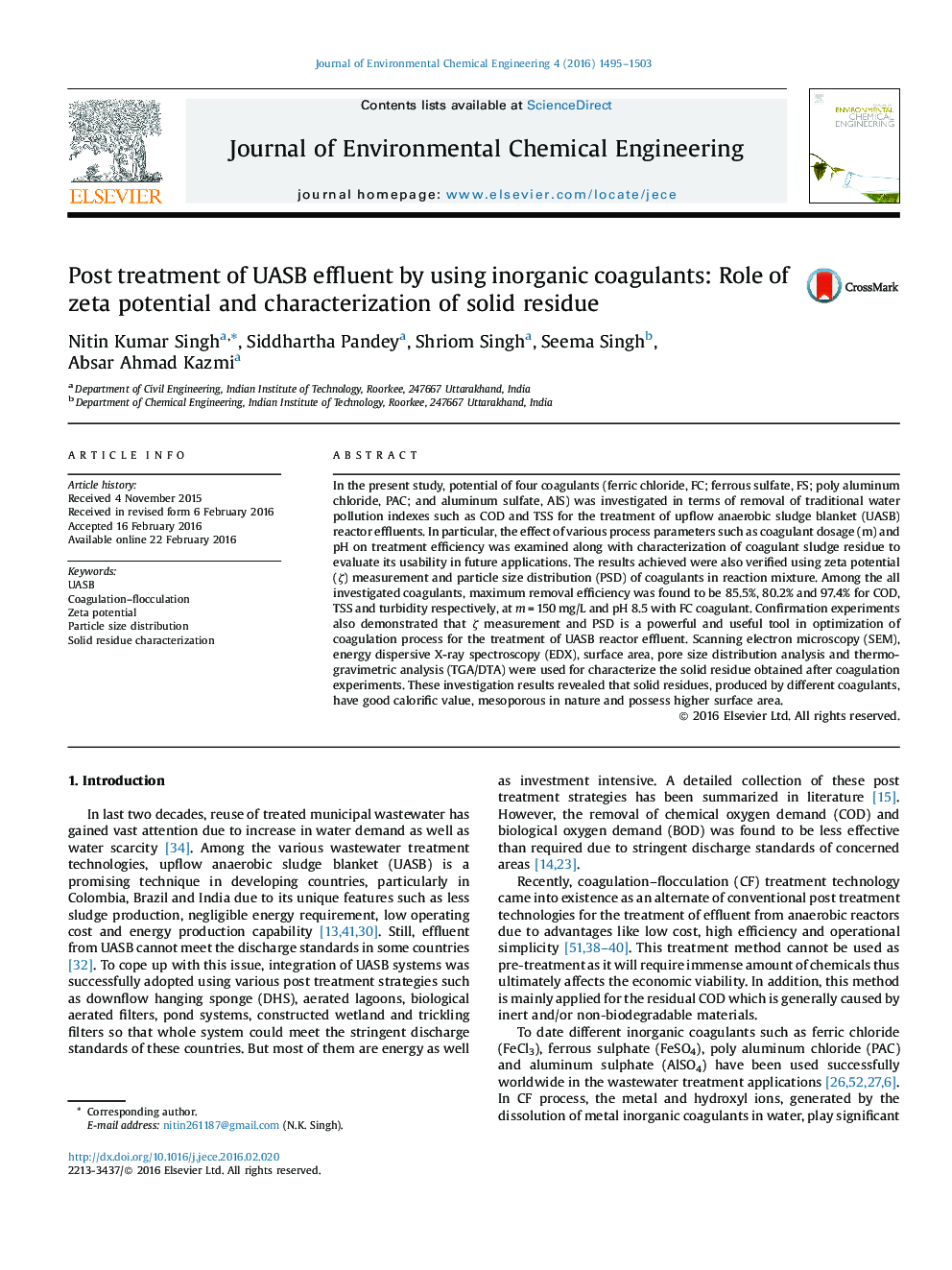| Article ID | Journal | Published Year | Pages | File Type |
|---|---|---|---|---|
| 221631 | Journal of Environmental Chemical Engineering | 2016 | 9 Pages |
In the present study, potential of four coagulants (ferric chloride, FC; ferrous sulfate, FS; poly aluminum chloride, PAC; and aluminum sulfate, AlS) was investigated in terms of removal of traditional water pollution indexes such as COD and TSS for the treatment of upflow anaerobic sludge blanket (UASB) reactor effluents. In particular, the effect of various process parameters such as coagulant dosage (m) and pH on treatment efficiency was examined along with characterization of coagulant sludge residue to evaluate its usability in future applications. The results achieved were also verified using zeta potential (ζ) measurement and particle size distribution (PSD) of coagulants in reaction mixture. Among the all investigated coagulants, maximum removal efficiency was found to be 85.5%, 80.2% and 97.4% for COD, TSS and turbidity respectively, at m = 150 mg/L and pH 8.5 with FC coagulant. Confirmation experiments also demonstrated that ζ measurement and PSD is a powerful and useful tool in optimization of coagulation process for the treatment of UASB reactor effluent. Scanning electron microscopy (SEM), energy dispersive X-ray spectroscopy (EDX), surface area, pore size distribution analysis and thermo-gravimetric analysis (TGA/DTA) were used for characterize the solid residue obtained after coagulation experiments. These investigation results revealed that solid residues, produced by different coagulants, have good calorific value, mesoporous in nature and possess higher surface area.
Graphical abstractFigure optionsDownload full-size imageDownload as PowerPoint slide
